In June, I headed up to North Carolina for a few weeks of solar projects. And motorcycles. Have you ever driven a Russian Ural with a sidecar?
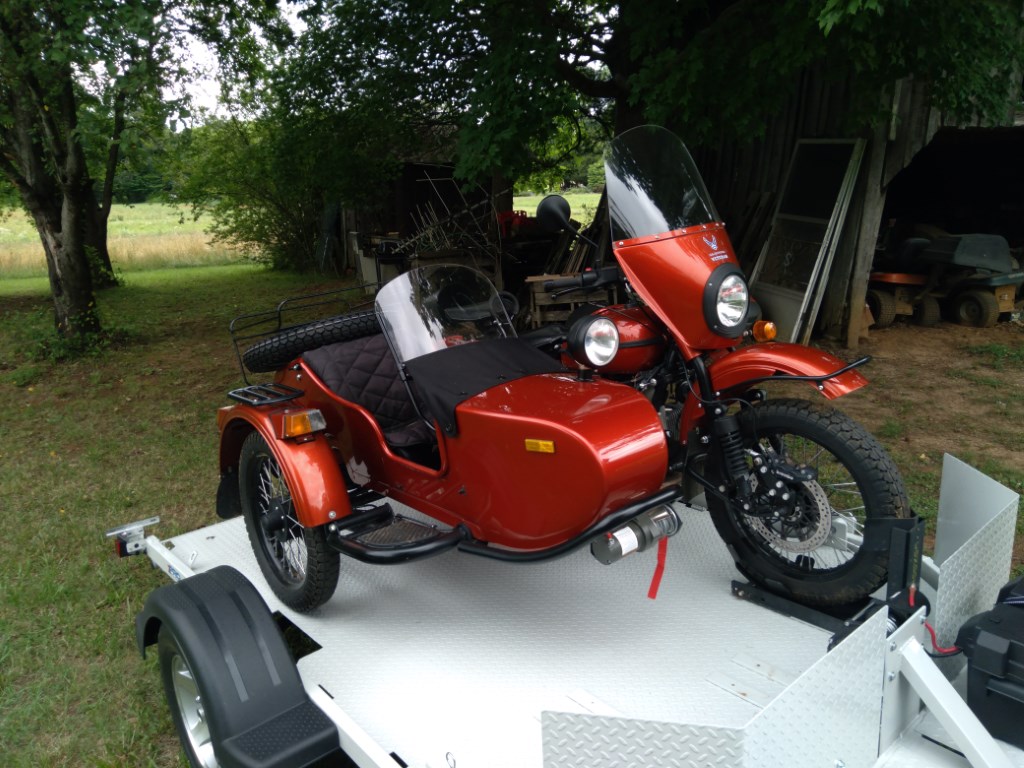
What could be a better combination? No sooner than I leave town, though, a tropical storm heads for my house. Just the usual damage: the driveway is gone and a few more trees are down. MY power stayed on, of course. Via the wonders of SMS texting, Bro was lamenting that he no longer had a generator and I mentioned I could make him a deal on a great generator I had. It was one he had discarded as irreparable. More on that in a bit.
Once in North Carolina, one of the projects was a solar refit on an old Winnebago motorhome. It was getting rooftop solar, a new inverter and a bank of lithium batteries. And, oh by the way, Neal, the generator won’t start, can you put a new starter on it? If only…
I know this is the solar blog, but generators have long been an important adjunct to solar power systems. Cloud happens, you know, and sometimes you need more than the sun can provide for special occasions, like desulphating your batteries.
The two generators had both shared and separate miseries. Bro’s leaked oil like mad and you could pull the rope until your shoulder pulled out of socket and it would not start. It was maybe 10 years old, shed stored and little used. He is redoing the back deck and shed, so everything got tossed, including the generator, which was tossed my way.
First thing to look at was the oil problem. I started going over it with a wrench, fearing the case was not tight or maybe it was cracked. Nope. Everything was snug…except the oil drain plug. You may recall from the Turbo Beast story that I don’t rate Bro’s mechanical skills very highly, but …really!?!? One thing about a generator with a Honda engine, or any other with a low oil switch, it won’t run without oil. That is a good thing. Others WILL run without oil. Once. Not for very long. With the oil plug snugly in place, the leak was gone, but it still would not start. Now we get to the really weak spot for generators and small engines in general: bad gas.
What is bad gas? If it is ordinary 10% gasohol that has been away from the station a while. THAT’S bad gas. It is fine if you keep running, but when it just sits, it turns into a vile goo that eventually becomes tar in the delicate spaces of your carburetor. I have gone over to using marine gas in my generators and fleet of lawn mowers. In storage, carburetors should be drained and gas should be kept in sealed containers. Some people swear by the additive “Seafoam”, which I strongly doubt is actual sea foam. At the end of use, let the generator run dry, for best results. Between runs, while still in season, I leave the pure marine gas in the tank and shut off the fuel valve to drain the carb and stop the engine.
Back in North Carolina, the Winny’s Onan turned into a can of worms. At first glance you will decide there is no way you can change the starter without removing the generator. Actually, you can! However, when I removed the old starter, it was missing the Bendix gear. Oh, foo! Long story short, it had to come out and got rolled over and over before the pieces finally fell out. At that point, we were where the starter broke in the first place: It would not start, so the owner kept grinding it over and over whilst misting it generously with starting fluid. It was the strong backfire that split the gear.
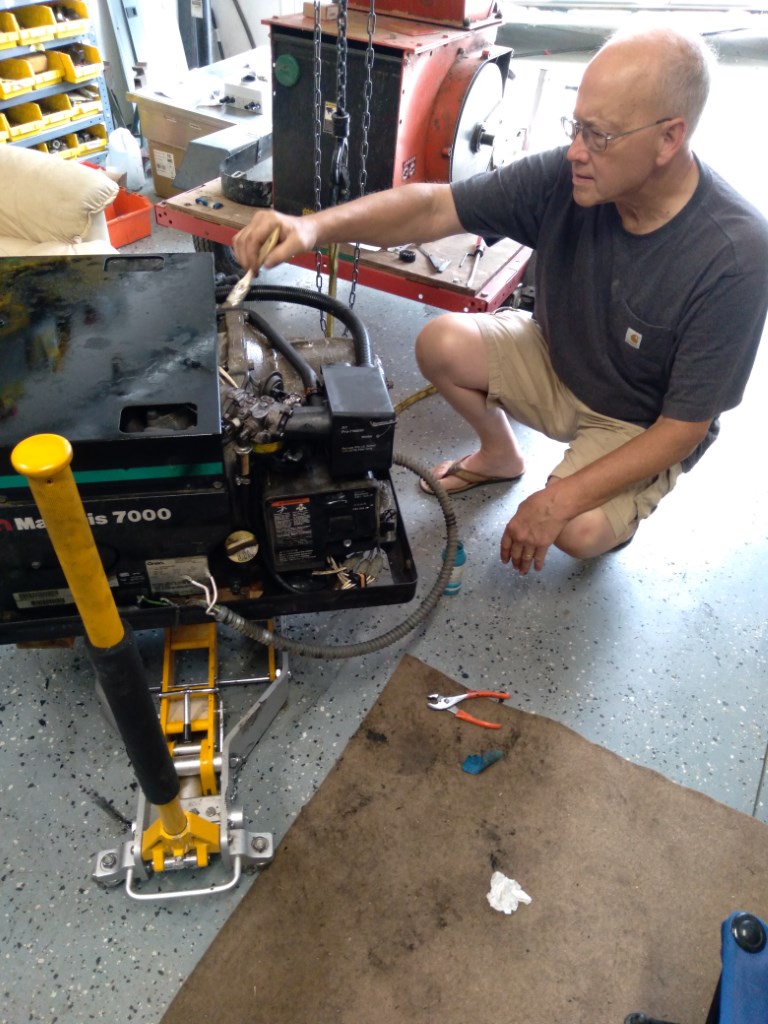
The gas in the motorhome’s tank had not been changed in years and was amber, going brown in color. The huge big-block Chevy V8 flows enough that it had not been affected, but the Onan was suffering a clot. While the dozen of gallons in the fuel tank had turned brown, the few ounces in the carburetor had turned into a tarball.
Now we are at a common point in this tale of two generators. A carb is a pipe with a constriction called a venturi. The air flows through and at the venturi a vacuum is formed, which sucks a mist of gasoline into the airstream bound for the combustion chamber. The amount of fuel flow is regulated by one or more “jets” and an adjustable needle valve. There are variations and complications, but that is the basic deal. Oh, there is a float valve in there that keeps the gasoline in the bowl at a constant level and some engines may have a fuel pump bolted onto the engine, somewhere. Bro’s generator has a fuel tank over the engine, so no pump needed. The Onan has an electric pump to draw from the vehicle fuel tank.
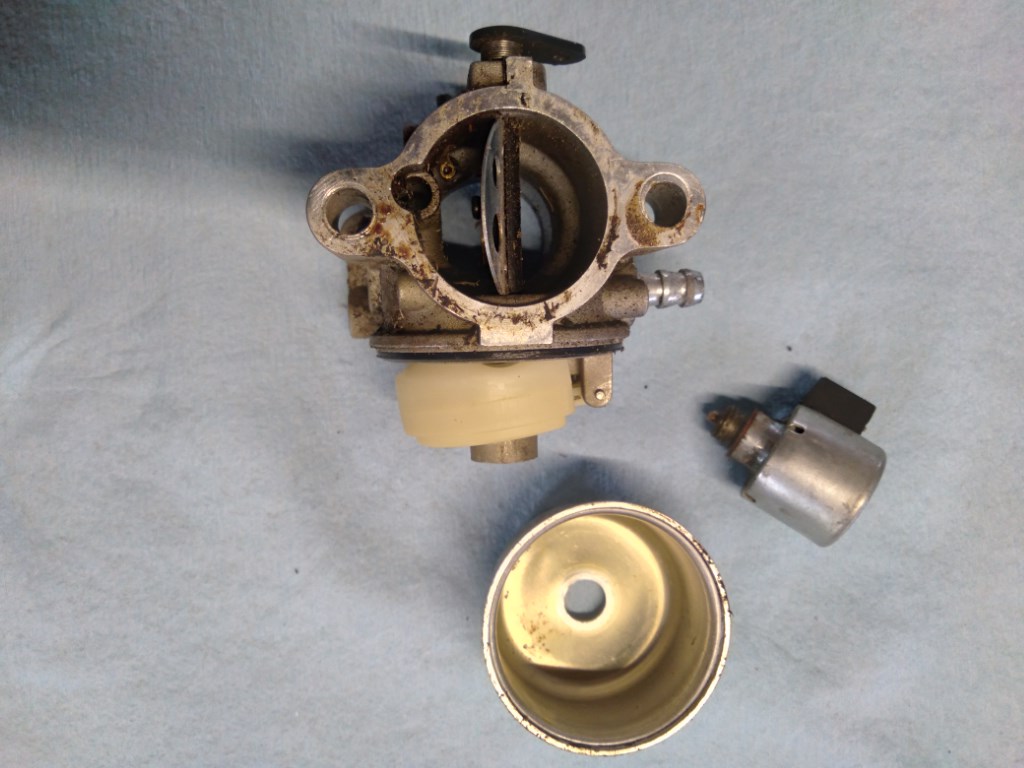
The most common problem will be the jet is clogged. The bottom of the circular fuel bowl usually has what appears to be a nut, an electrical solenoid or a black plastic altitude adjuster (on the Onan) which is unscrewed and the bowl will drop down. You may or may not have to remove the carburetor to do this and even if you don’t have to, you might end up doing a better job of cleaning if you do. For good measure, mark a line where the bowl joins the main casting, as it often needs to go back the same way to avoid jamming the float.
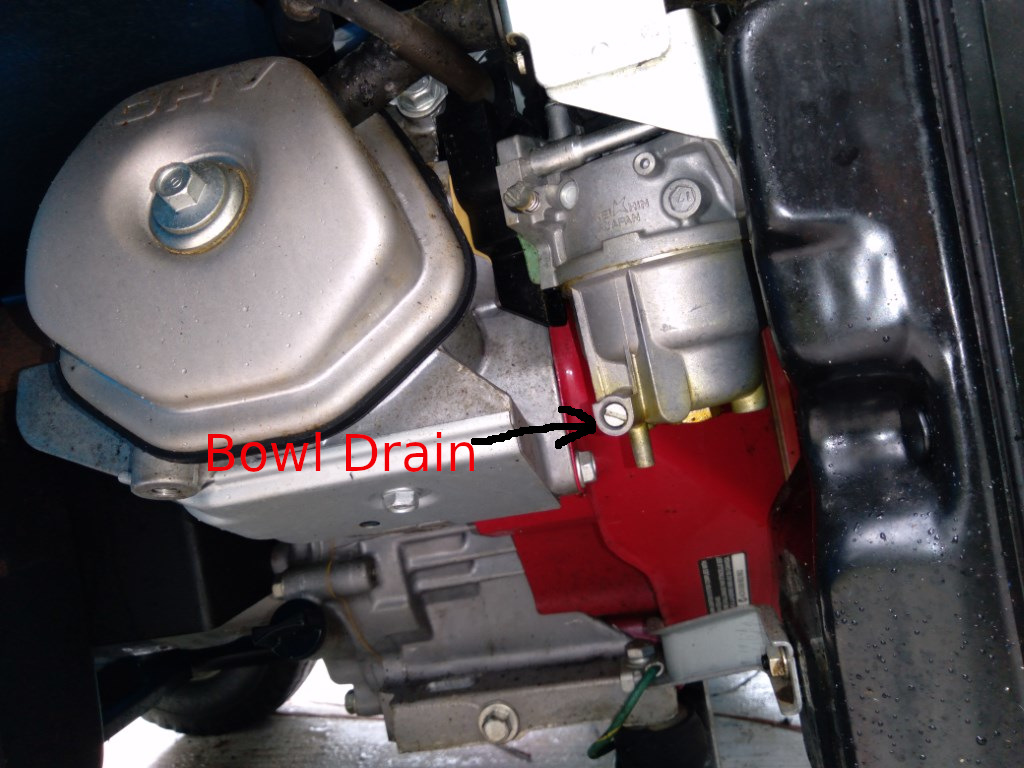
Be careful, this stuff is a little delicate and we are talking about flammable liquids, here. Clean up the bowl and whatever came down with it. The “nut” may contain the jet or a needle valve. Any needle valve you remove, count the turns when you unscrew it and put it back in just the same for a proper fuel mixture. Any parts that look like they have a hole, but you can’t see or blow through, take a fine piece of stiff wire to force out the clot. Any number of solvents will work, even the WD40 you probably have, but be careful you don’t dissolve the float! There is actual carburetor cleaner you can buy at the auto parts store, too. It is quite likely that the shaft to which your fuel bowl was attached has a jet up in there and a port in the side. If a medium screwdriver inserted catches a screw slot, run it on out and clean the gunk from there.
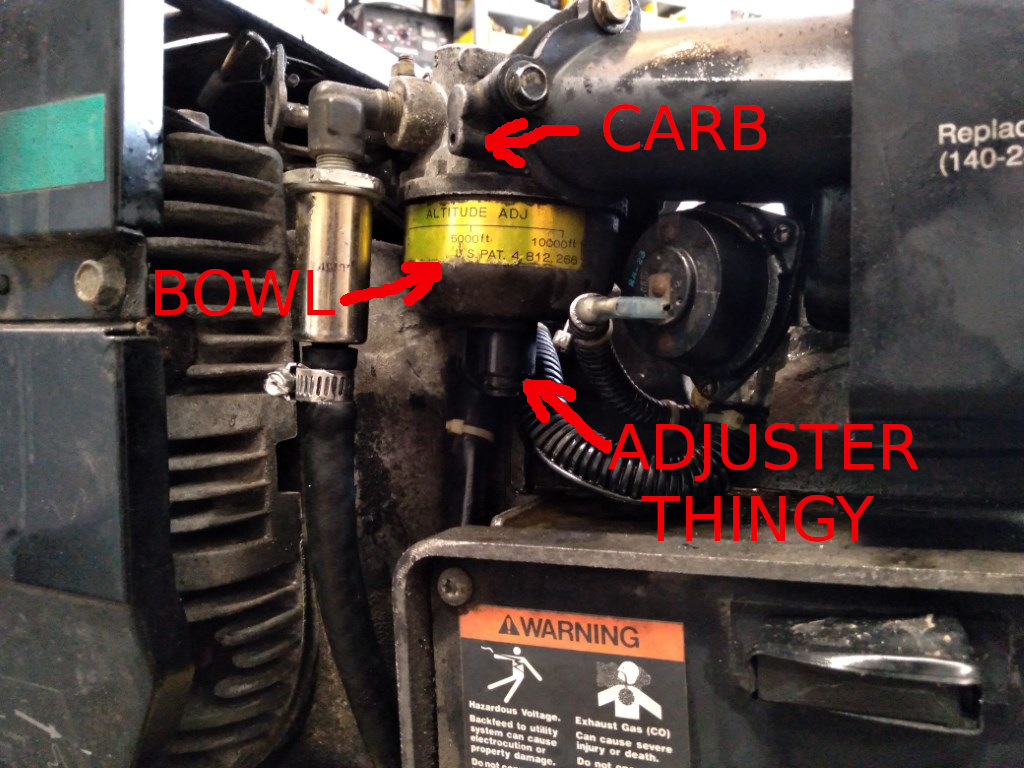
At this point, you have not done a complete carb overhaul, but there is a good chance you can get it running. Put it all back together, check for leaks and give it a start. In both cases, I changed the oil and various filters. The Honda’s filter was crumbling with age.
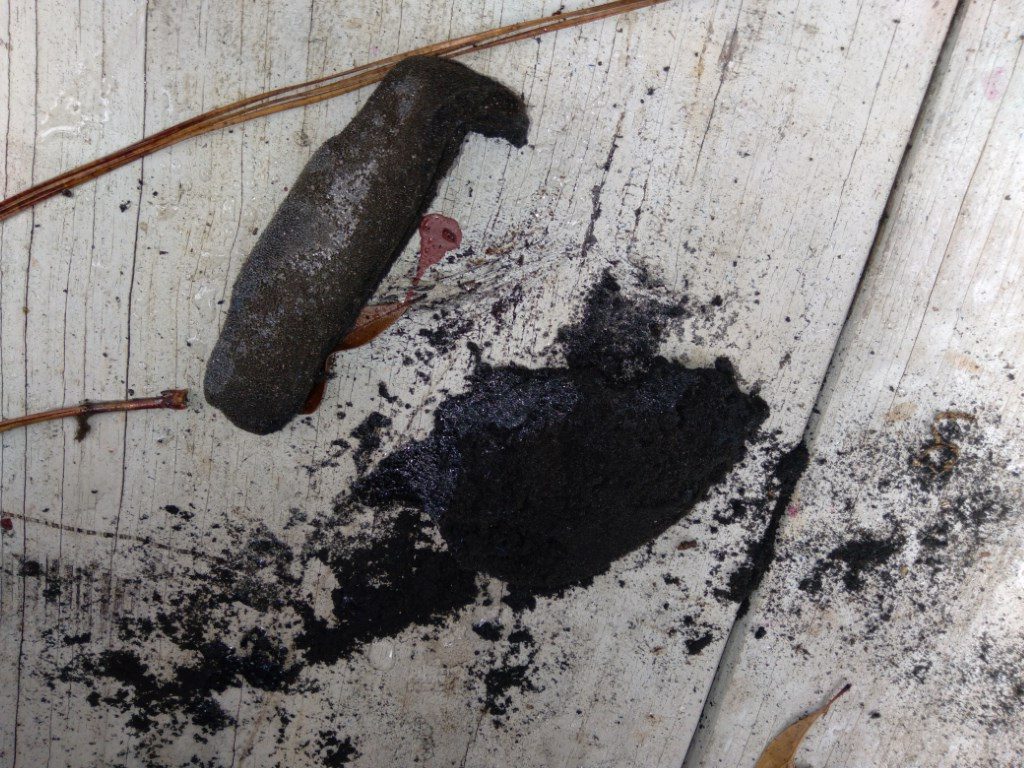
When I left North Carolina, the Onan was rumbling along at its leisurely 1200 rpm, which sounds too slow if you don’t know any better. This morning, when I tried out a new cable from Bro’s former generator to my Sunny Island inverter/charger, it fired up on the first pull and settled in at 6600 watts, just shy of full continuous rating. That tells me the fuel is flowing freely. To keep it that way, it is fueled with the pure, alcohol-free gas and the carb was run dry when I was done testing.
Knowing this little bit might help you find a used generator super cheap. If the oil is super black, then they probably ignored the 25 or 50 hour oil change. That would be an iffy choice. If the oil level is low, the generator may not start just because it just needs oil. If won’t start after having sat unattended since the last hurricane…you know what to do.
I’m home, now. Bro came by with the grandkids for a picnic the other day, bringing his NEW 2500 watt dual-fuel inverter generator to power the induction plate and George Foreman grill. Whatever happened to putting the hot dogs on a grill over a wood fire? He says the generator won’t run long on the tiny internal gas tank, but runs a long time on the 20 pound propane bottle. That sounds like a plan and he’ll never crapify the carb if he only runs propane. Man, he has been bragging about this generator, a Honda clone, but he looked like he was going to wear himself out after a dozen pulls on the rope. It is supposed to start by the third pull. It did, after I reached over and turned on the propane tank valve.—Neal
